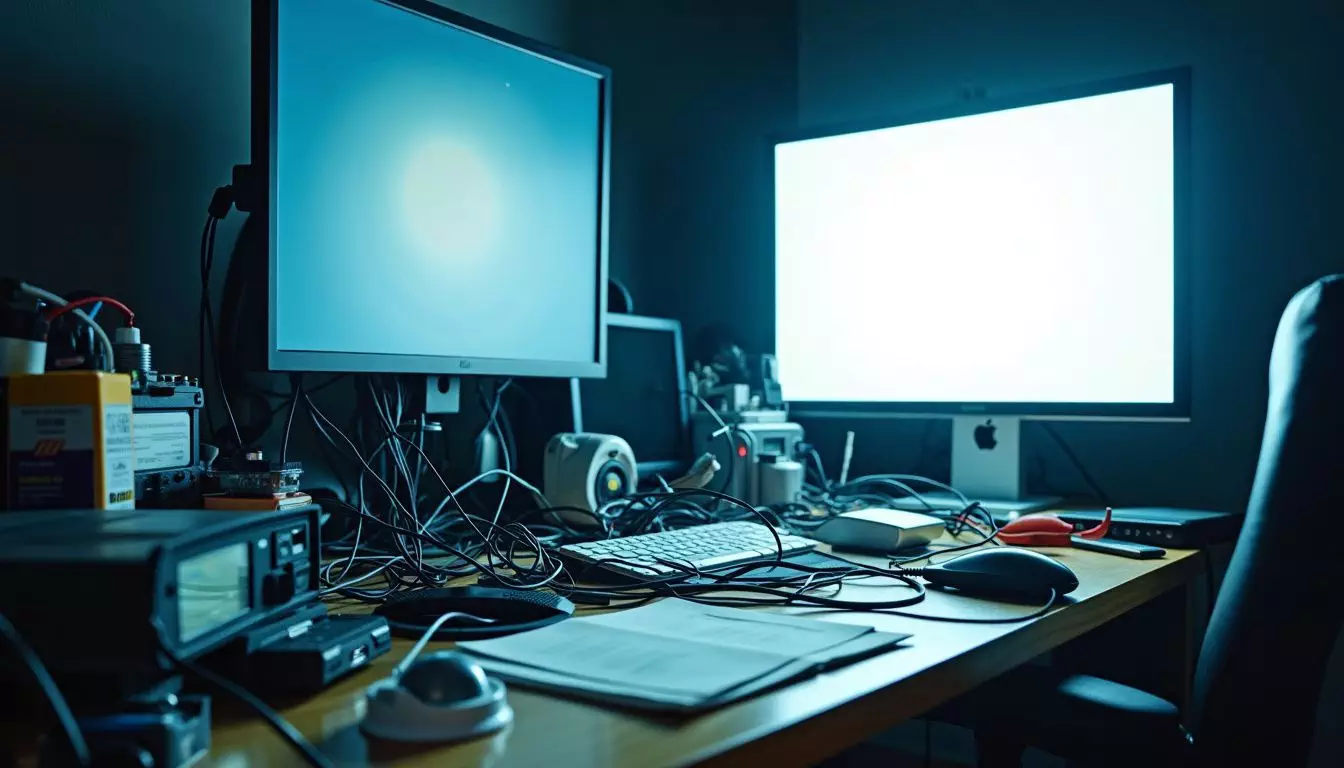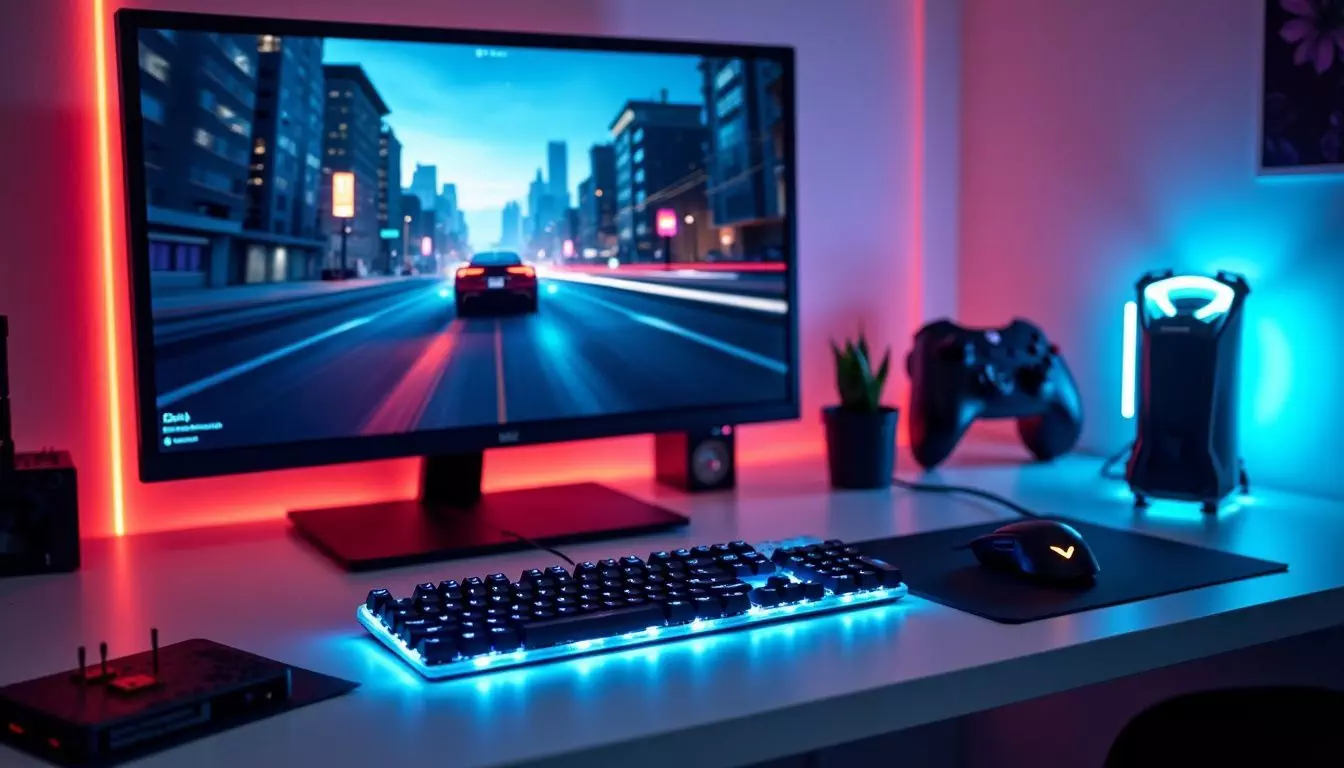Input lag can ruin any gaming experience. It’s the time it takes for your actions—like a button press or mouse click—to show up on the screen. For gamers, even a millisecond’s delay can mean the difference between victory and defeat. 1
Alex Herrick brings his expertise in optimizing computer performance to help reduce input lag on PC. He knows how fine-tuning display settings and updating drivers can make big differences.
Follow along to see how Alex’s proven tips will enhance your gaming experience. 3
Key Takeaways
- Update your graphics drivers often. This helps keep lag low and boosts performance.
- Use G-SYNC or FreeSync to sync your display with your GPU for smooth gameplay.
- Set your PC to high performance mode. Turn off power-saving features.
Adjust Display and Graphics Settings

Start by fine-tuning your display settings. Tweaking these will help reduce input lag and boost performance….
Set the correct resolution and refresh rate
Make sure the display resolution matches your monitor’s native setting. On most monitors, this is usually recommended in the settings menu—set it to 1920×1080 if unsure. Use a higher refresh rate like 120Hz or 144Hz for smoother gameplay and lower input lag. 2
Disable V-Sync to reduce latency. For example, Nvidia users can achieve a controller latency as low as 59ms at the correct resolution and refresh rate. Using G-SYNC with an Nvidia GTX card on an ACER G-SYNC monitor also helps maintain low latency at around 60ms. 1
Update graphics drivers and disable V-SyncEnsuring your display is set correctly will drastically improve gaming performance.
Update graphics card drivers regularly. For instance, Intel HD Graphics 4000 needs updates for top performance. Nvidia GeForce driver version 350.12 and AMD Radeon driver version 15.4 (Beta) also show great results. 2
Disable V-Sync in games to lower input latency. In-game V-Sync adds about 103ms (6.2 frames) for Nvidia and roughly 102ms (6.1 frames) for AMD cards. 3 Direct3D Overrider’s V-Sync increases latency further—115ms (6.9 frames) on Nvidia and around 106ms (6.4 frames) on Radeon GPUs.
Optimize Your PC’s Performance Settings
Turn off power saving modes and set your PC to high performance. Keep all drivers, especially for peripherals and network, up to date for the best gaming experience.
Turn off power saving and set to high performance
Disable energy-saving modes and hibernate settings. Go to Settings > System > Power & Sleep Settings > Additional Power Settings. Select “High Performance”. Set “Turn off display” to 15 or 30 minutes, and set “Hibernate after” to Never. 1
This mode helps reduce input delay in games like first-person shooters. It ensures your gaming monitor stays active with less lag. Adjust all settings through the control panel for best results. 3Ensure peripheral and network drivers are up to date
Keep your PC gaming smooth by updating all drivers. Go to Control Panel, then Device Manager, and look for peripheral drivers like your computer mouse and keyboard. Don’t forget the motherboard chipset. 2
This helps lower input delay in games. Also, always check for network driver updates. Turn off Wi-Fi and Bluetooth when not needed, and use a direct wired connection instead of USB hubs for better performance. 3
Regularly updated drivers are key to reducing input lag.
Understanding CPU Choices and Their Impact on Gaming Performance
The Central Processing Unit (CPU) drives game performance. A strong CPU, like AMD Ryzen 9 or Intel i9, boosts frame rates and reduces latency. 4 CPUs handle tasks such as physics calculations and AI actions in games.
Faster processors lead to smoother gameplay.
Older or slower CPUs can bottleneck the system. This means they can’t keep up with the demands of new games, causing lag. Updating your CPU can make a big difference, especially for fast-paced games and first-person shooters. 3 For the best results, pair your updated CPU with efficient cooling systems and ensure all drivers are current.
Advanced Techniques to Reduce Input Lag
Section 5 reveals more ways to improve input lag. Explore settings like G-SYNC and reducing pre-rendered frames for better gaming performance.
Use G-SYNC or FreeSync for adaptive sync
Use G-SYNC or FreeSync to reduce input lag. G-SYNC, found on Nvidia GPUs, has a latency of 60ms (3.6 frames), while SLI with G-SYNC shows 63ms (3.8 frames). FreeSync, used by AMD Radeon cards, offers similar results at 59ms (3.6 frames). 6 These technologies help sync the refresh rate of your display with the GPU’s frame rate.
Adaptive sync cuts down screen tearing and stuttering in games like first person shooters and fighting games. This makes gameplay smoother and more responsive… crucial for competitive gaming! 5 Use the NVIDIA control panel or AMD settings to enable these features easily.
Adjust pre-rendered frames settingsAdjusting pre-rendered frames can reduce input lag. Set Max Prerendered Frames to 1 for the best results. On Nvidia cards, this setting reduces latency to 95ms (5.7 frames). For AMD users, using a flip queue setting of 1 achieves around 97ms (5.8 frames) latency.
Turn off in-game V-Sync while adjusting pre-rendered frames settings. Combining V-Sync with Maximum Pre-Rendered Frames can lead to higher delays—up to 101ms (6.1 frames). Always tweak these settings through your GPU control panel for optimal performance in competitive games. 7
Conclusion
Reducing input lag on a PC boosts your gaming experience. Adjust display settings, update drivers, and use high-performance modes. Try G-SYNC or FreeSync for smoother gameplay. Each change can make a big difference! Enjoy faster responses and better game control today!
For more insights on how CPU choices can impact your gaming performance, be sure to check out our guide on understanding Intel CPU letter meanings.
FAQs
1. What causes input lag on a PC?
Input lag is the delay between your actions and their display on-screen. It can be caused by high latency in video games, network issues in multiplayer video games, or settings like v-sync option and polling rate.
2. How can I reduce input lag when playing PC games?
To minimize input lag, adjust your video settings to lower latency—use fullscreen mode instead of borderless, disable v-sync option, and set higher frame rates like 120 frames per second. Updating Windows and drivers also helps.
3. Does using different hardware help reduce latency?
Yes! A gaming computer with a fast graphics processing unit (GPU), a responsive computer monitor with low display lag, and a wired gamepad or keyboard can significantly impact performance.
4. Can adjusting in-game settings improve responsiveness?
Absolutely! Tweaking in-game settings such as resolution and refresh rate can make fast-paced games more responsive by reducing the amount of input lag.
5. Is network lag the same as input lag?
No… Network lag refers to delays due to internet connection issues during online multiplayer video games, while input lag involves delays between pressing keys or buttons and seeing results on-screen.
6. What role does frame rate play in reducing input delay?
Higher frame rates—like 59 frames per second or even 120 frames per second—make it feel smoother because they reduce the time taken for each frame to appear onscreen… Timing is everything here!
References
- ^ https://displaylag.com/reduce-input-lag-in-pc-games-the-definitive-guide/
- ^ https://www.nvidia.com/en-us/geforce/guides/gfecnt/202010/system-latency-optimization-guide/
- ^ https://www.intel.com/content/www/us/en/gaming/resources/how-to-fix-input-lag.html
- ^ https://dl.acm.org/doi/fullHtml/10.1145/3411764.3445245
- ^ https://www.overclockers.com/forums/threads/input-lag-adapt-vsync-vsync-gsync-and-free-sync-discussion.768882/ (2016-01-17)
- ^ https://forums.blurbusters.com/viewtopic.php?t=10449 (2022-09-12)
- ^ https://forums.guru3d.com/threads/does-lowering-max-prerendered-frames-reduce-input-lag-when-using-traditional-v-sync.429701/

